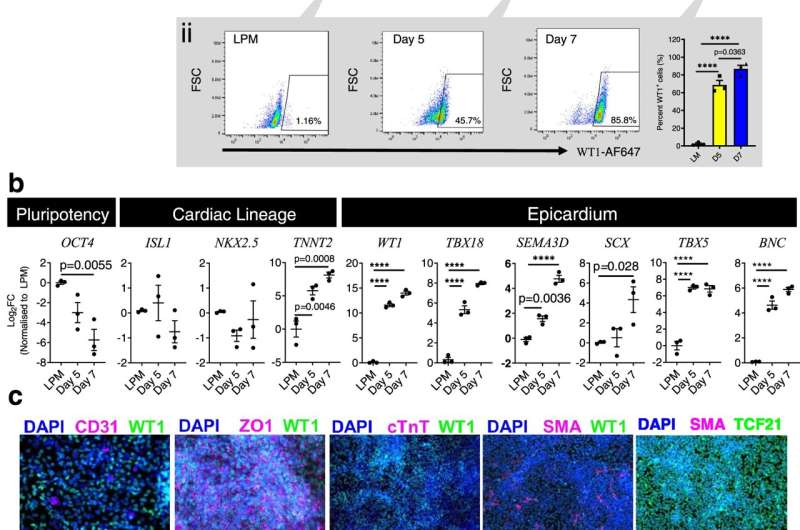New research may help scientists grow more complex and mature heart tissue in the lab

A team led by researchers at Massachusetts General Hospital (MGH) has generated premature cells that support early heart development but vanish soon after birth. The investigators hope that the advance, which is described in Nature Communications, will help bring them closer to achieving their goal of using patients' cells to generate functioning heart tissue that could be transplanted, similar to donor organs, for the treatment of heart failure.
The cells, called pre-epicardial cells, form the epicardium, a membrane that covers the outer surface of the heart. This membrane generates a variety of cells needed to support heart development before birth. Harald Ott, MD, a thoracic surgeon at MGH and an associate professor in surgery at Harvard Medical School, and his colleagues developed a recipe to generate pre-epicardial cells from human induced pluripotent stem cells, which are embryo-like cells derived from reprogrammed mature cells such as a patient's skin cells.
When placed in contact with heart muscle cells (or cardiomyocytes), the pre-epicardial cells developed further to become epicardial cells and took on their important role of supporting embryonic heart formation—for example, by enhancing the maturation of nearby cardiomyocytes.
Ott notes that scientists are able to retrace early stages of heart development and generate millions of cardiomyocytes from a single blood draw, but forming the structure of the heart is very complex. "It has been difficult to retrace later stages of tissue development due to the many cell types involved and the complexity of the three-dimensional environment of the developing heart," he explains. "Our study introduces a cell type that is much closer to later stages of human cardiac development than what we have been able to generate so far."
Producing cells that play key roles in forming the structure of the heart is necessary for regenerative medicine strategies for heart disease. "While there are many more steps still required to complete the puzzle of heart development, this work adds an important piece that will hopefully help us and others in recapitulating cardiac development to generate novel therapies for heart failure," says Ott. He envisions that such cell- or tissue-based therapies will provide "on demand" treatments to restore or replace lost organ function in patients suffering from chronic organ failure such as heart failure, end stage lung disease, and kidney disease.
More information: Jun Jie Tan et al, Human iPS-derived pre-epicardial cells direct cardiomyocyte aggregation expansion and organization in vitro, Nature Communications (2021). DOI: 10.1038/s41467-021-24921-z
Journal information: Nature Communications
Provided by Massachusetts General Hospital




















